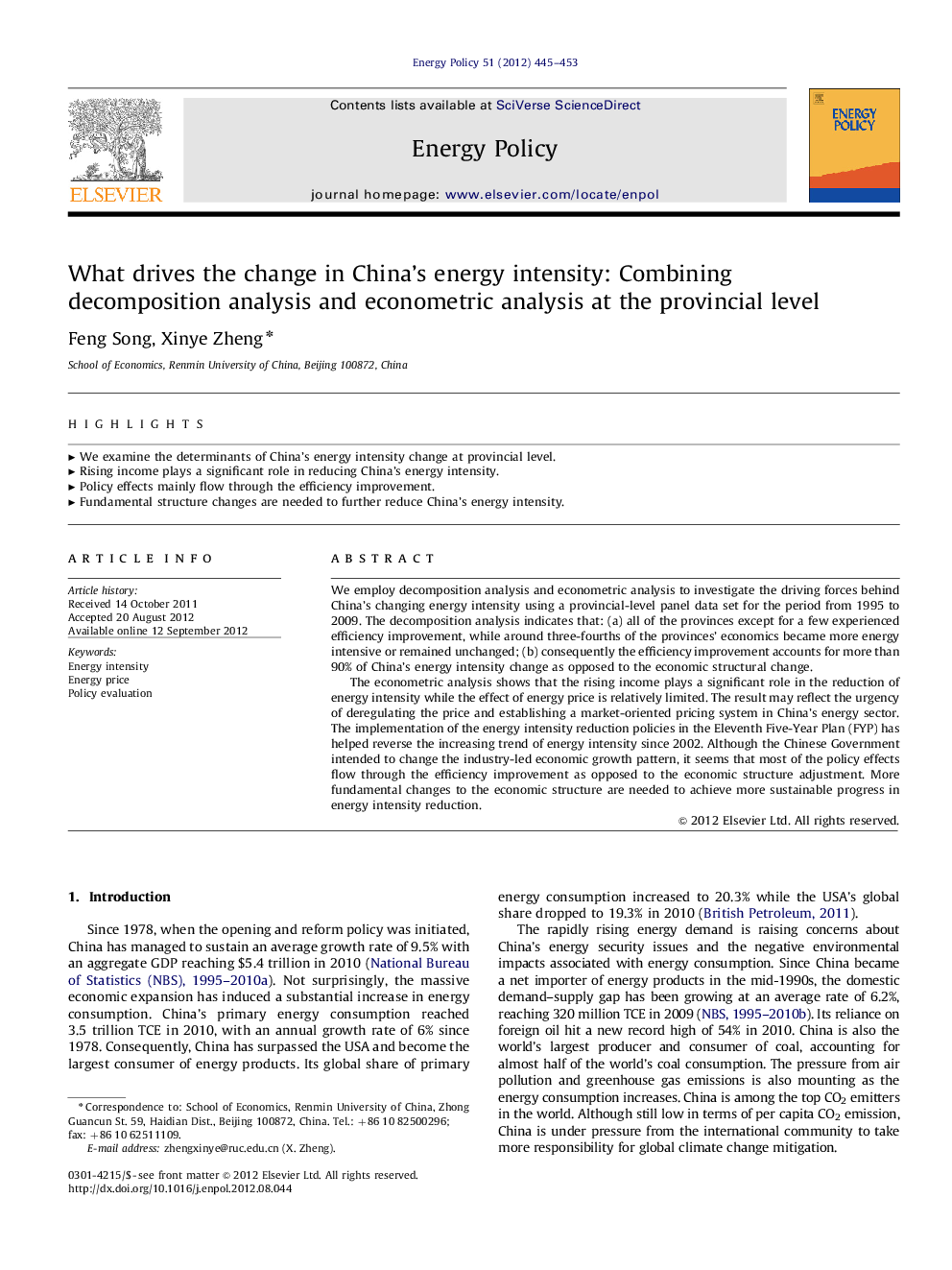| Article ID | Journal | Published Year | Pages | File Type |
|---|---|---|---|---|
| 995621 | Energy Policy | 2012 | 9 Pages |
We employ decomposition analysis and econometric analysis to investigate the driving forces behind China's changing energy intensity using a provincial-level panel data set for the period from 1995 to 2009. The decomposition analysis indicates that: (a) all of the provinces except for a few experienced efficiency improvement, while around three-fourths of the provinces' economics became more energy intensive or remained unchanged; (b) consequently the efficiency improvement accounts for more than 90% of China's energy intensity change as opposed to the economic structural change.The econometric analysis shows that the rising income plays a significant role in the reduction of energy intensity while the effect of energy price is relatively limited. The result may reflect the urgency of deregulating the price and establishing a market-oriented pricing system in China's energy sector. The implementation of the energy intensity reduction policies in the Eleventh Five-Year Plan (FYP) has helped reverse the increasing trend of energy intensity since 2002. Although the Chinese Government intended to change the industry-led economic growth pattern, it seems that most of the policy effects flow through the efficiency improvement as opposed to the economic structure adjustment. More fundamental changes to the economic structure are needed to achieve more sustainable progress in energy intensity reduction.
► We examine the determinants of China's energy intensity change at provincial level. ► Rising income plays a significant role in reducing China's energy intensity. ► Policy effects mainly flow through the efficiency improvement. ► Fundamental structure changes are needed to further reduce China's energy intensity.
